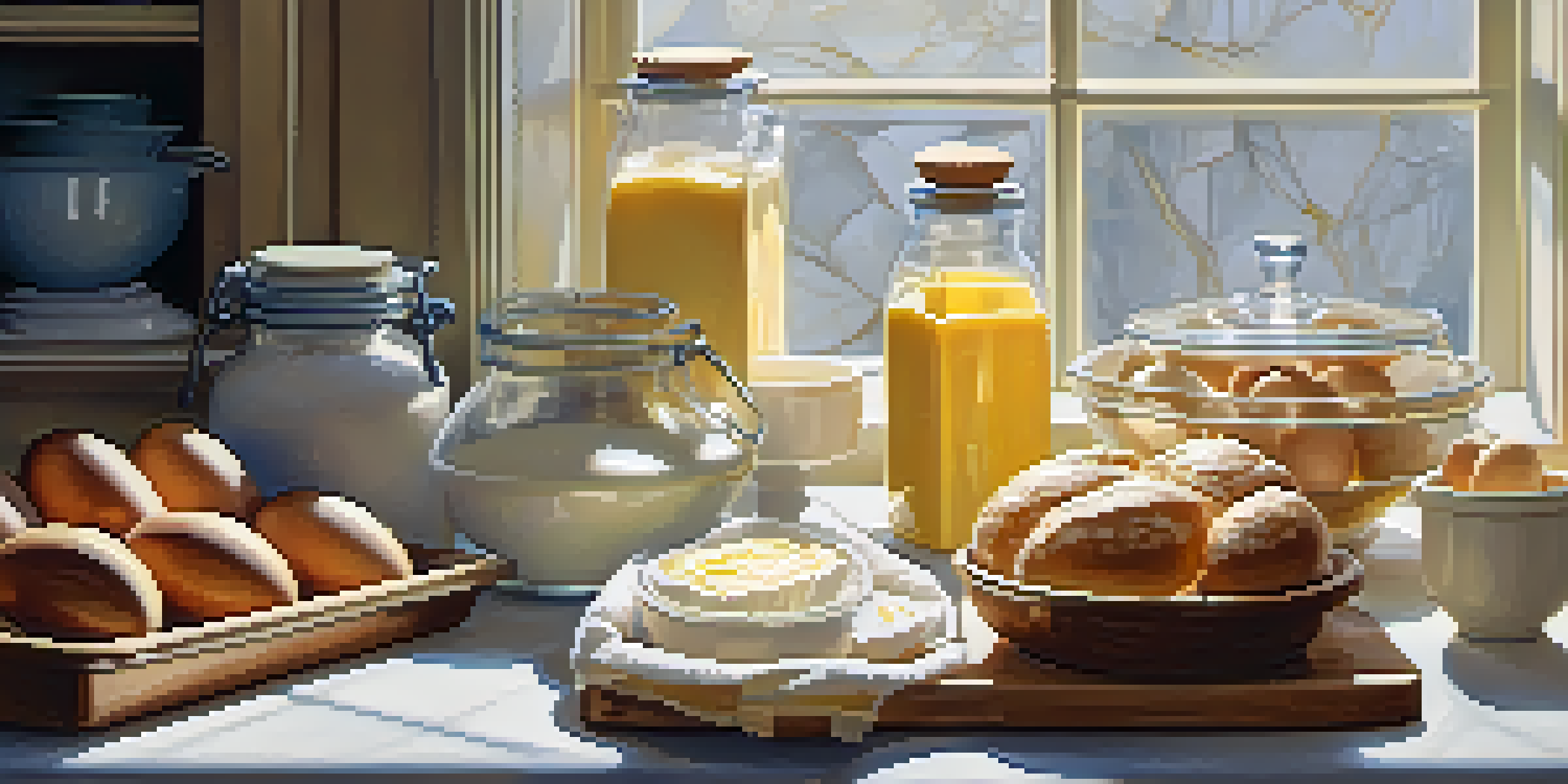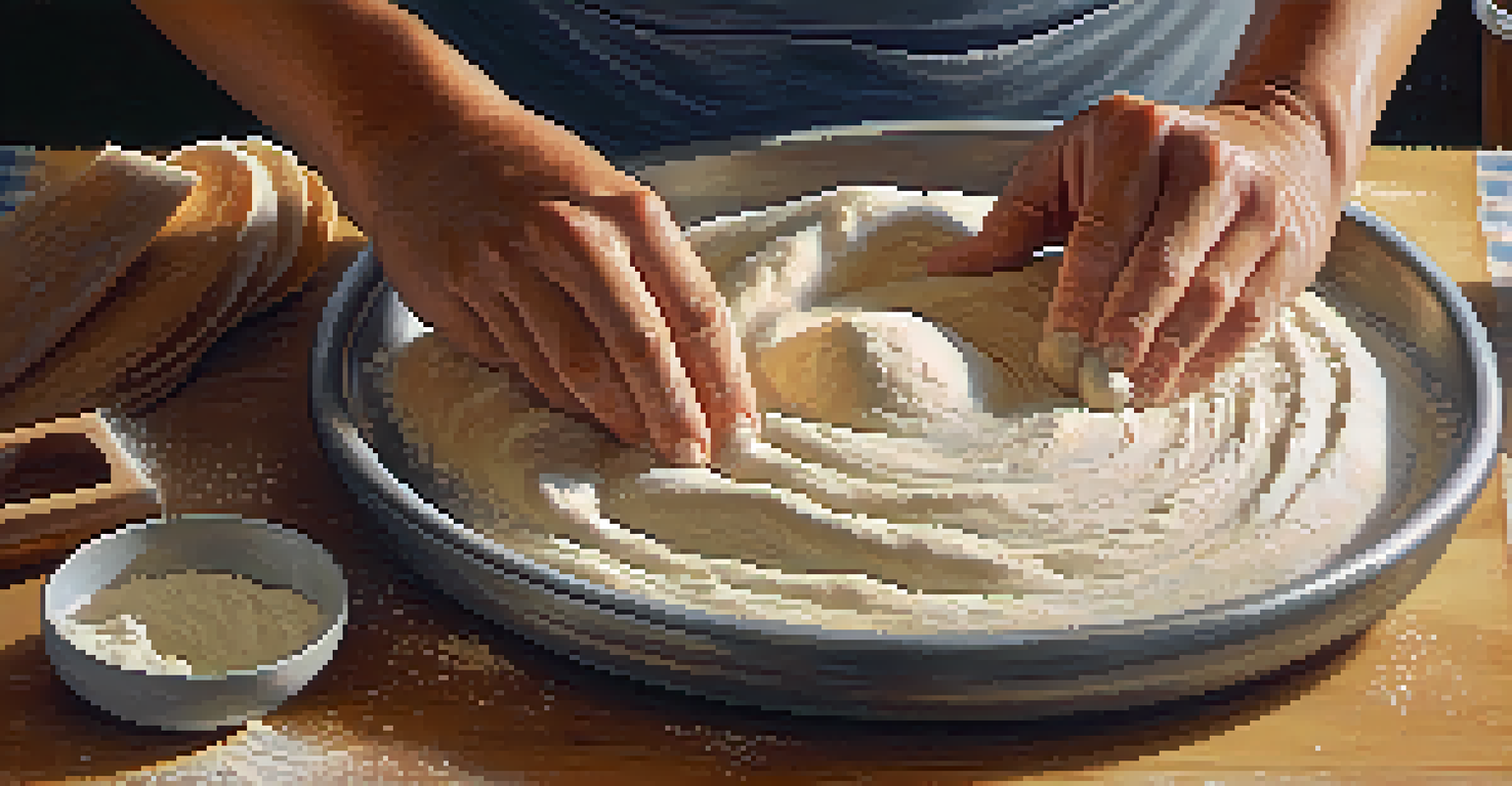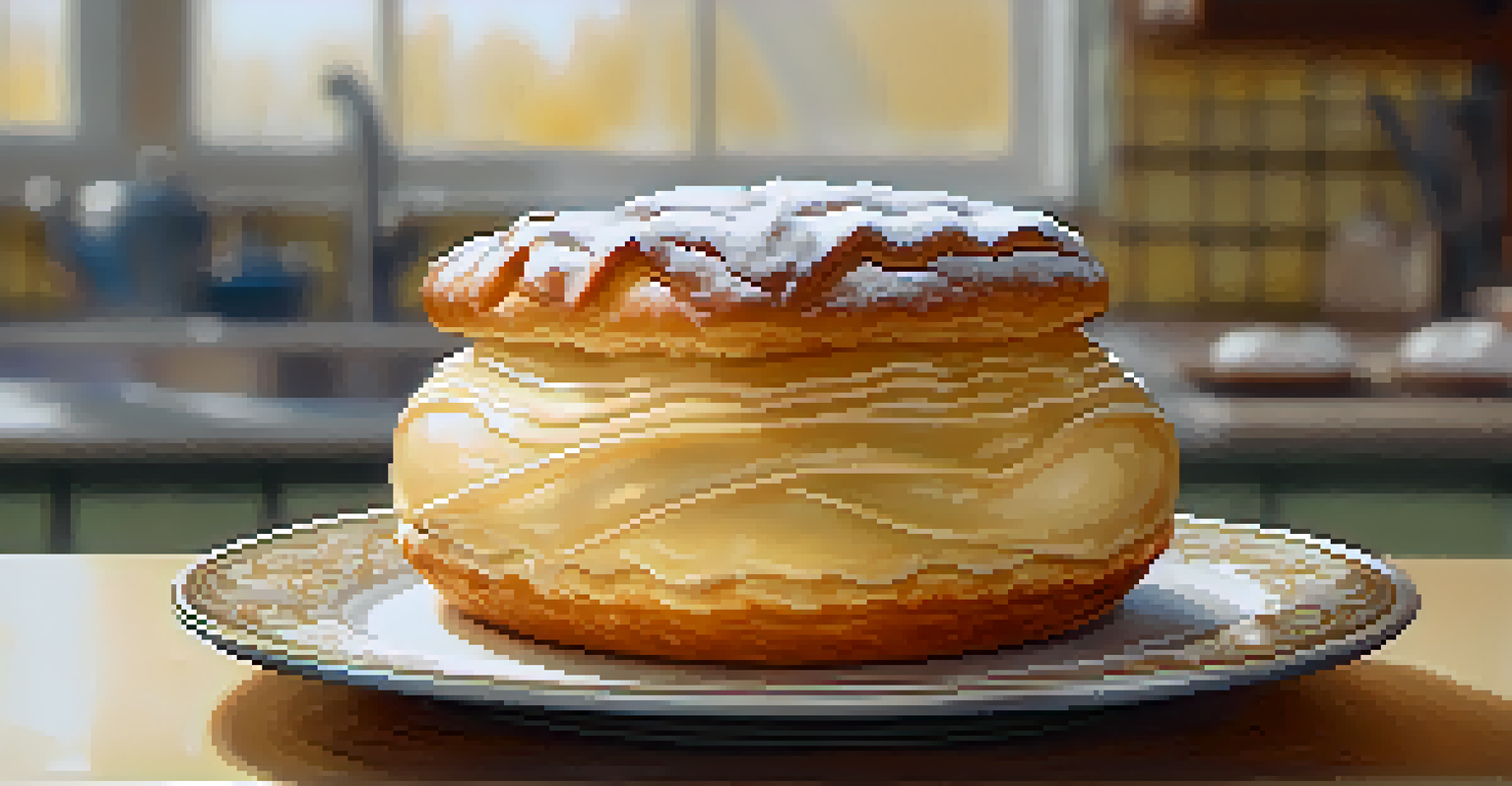The Science of Baking: Techniques for Perfect Pastry

Understanding the Role of Ingredients in Baking Pastry
Every ingredient in baking plays a crucial role in the final outcome. Flour provides structure, while fats like butter add tenderness and flavor. Sugar not only sweetens but also contributes to the texture and browning of your pastry, creating that delightful crispiness we all love.
Baking is both an art and a science, where precision and creativity come together.
To illustrate, think of flour as the backbone of your pastry. Without it, everything would crumble. Similarly, fat is like the glue that holds it all together, making each bite flaky and rich. Understanding how these ingredients interact can help you troubleshoot common baking issues.
When you grasp the science behind your ingredients, you’re empowered to make informed choices. For instance, substituting butter with margarine can change the texture significantly. Embrace this knowledge to elevate your baking game!
The Importance of Measuring Ingredients Accurately
Baking is often referred to as a science, and accuracy is key. Unlike cooking, where a pinch of this or a dash of that can suffice, baking requires precise measurements for consistent results. A digital kitchen scale can be your best friend in achieving that level of accuracy.

Imagine trying to build a house with uneven bricks—your pastry will likely collapse if your measurements are off. For example, using too much flour can lead to a dense, dry pastry instead of the light, airy texture you desire. Even a small discrepancy can have a big impact.
Ingredients Shape Your Pastry
Understanding the role of each ingredient, like flour for structure and fat for tenderness, is essential for successful baking.
To avoid these pitfalls, always measure dry ingredients by spooning them into a measuring cup and leveling off with a knife. Liquid ingredients should be measured in a clear liquid measuring cup for precision. This small step can make a world of difference in your baking results.
Techniques for Mixing Dough and Batter Properly
Mixing is a foundational technique in baking that can determine the texture of your pastry. Over-mixing can lead to tough pastries, while under-mixing might result in a crumbly texture. Understanding how to mix effectively can be the difference between a good pastry and a great one.
Good bread is the most fundamentally satisfying of all foods; and good bread with fresh butter, the greatest of feasts.
Think about mixing as a dance; it requires the right rhythm. For example, when making pie crust, you want to mix just until the ingredients come together. This allows the fat to remain in small pieces, which creates that desirable flakiness.
On the other hand, when making a cake batter, a bit more mixing is necessary to incorporate air and create a light, fluffy texture. Knowing when to stop or continue mixing is a skill that develops over time, so don’t be afraid to practice!
The Art of Kneading Dough for Perfect Texture
Kneading dough is an essential step that develops gluten, giving your pastry structure and chewiness. It’s a bit like a workout for your dough—you're working it to build strength. Over-kneading can lead to a tough texture, while under-kneading results in a weak structure.
Picture kneading as giving your dough a massage, helping it relax and come together. A good rule of thumb is to knead until the dough is smooth and elastic. You can test this by pressing a finger into the dough; it should spring back.
Accurate Measurement is Crucial
Precise measurements in baking lead to consistent results, making a digital kitchen scale an invaluable tool.
Don’t hesitate to flour your surface and hands lightly to prevent sticking, but be careful not to add too much flour, as this can alter the balance of ingredients. With practice, you'll find the perfect rhythm for kneading that works for you.
Understanding Temperature and Its Effects on Pastry
Temperature plays a vital role in baking, influencing everything from the texture to the rise of your pastry. For instance, cold butter is key in recipes like puff pastry, where layers of fat and dough create that signature flakiness. Conversely, room temperature butter is ideal for creaming with sugar to incorporate air.
Think of temperature as the conductor of an orchestra; it ensures that all elements come together harmoniously. If your kitchen is too warm, your dough might become overly soft, making it difficult to handle. On the flip side, cold dough can lead to a tough texture.
To achieve the best results, be mindful of the temperatures needed for different recipes. Keep your ingredients at the recommended temperatures and adjust your workspace accordingly. A few degrees can make all the difference in your pastry success.
Baking Techniques: Timing and Oven Settings Matter
Baking is as much about timing as it is about temperature. Each pastry has a specific baking time and temperature that should be adhered to for the best results. Overbaking can lead to dryness, while underbaking can result in a gooey center that won’t set properly.
Imagine baking as a balancing act; too much time or heat on either side can tip the scales. Using an oven thermometer can help ensure that your oven is at the correct temperature, as many home ovens can be off by quite a bit.
Temperature Affects Baking Success
Maintaining the correct temperature for ingredients and the oven is vital for achieving the desired texture and rise in pastries.
To prevent any surprises, set a timer and check your pastries a few minutes before the suggested time. This gives you a chance to catch any issues early and adjust as needed, ensuring that your pastries come out perfectly every time.
Cooling and Storing Pastries for Longevity
Once your pastries are baked, cooling and storing them correctly is crucial for preserving their texture and flavor. Allow your pastries to cool on a wire rack, which helps prevent sogginess by allowing air to circulate around them. This simple step can make a significant difference in the quality of your finished product.
Think of cooling as letting your pastry catch its breath after a workout. If you store them while they're still warm, you risk creating steam that can lead to a less-than-ideal texture. Proper cooling can also enhance the flavors, allowing them to develop fully.

When it comes to storage, keep your pastries in an airtight container to protect them from moisture and air. If you’re not consuming them right away, consider freezing them for longer preservation. Just remember to wrap them well to maintain their quality!